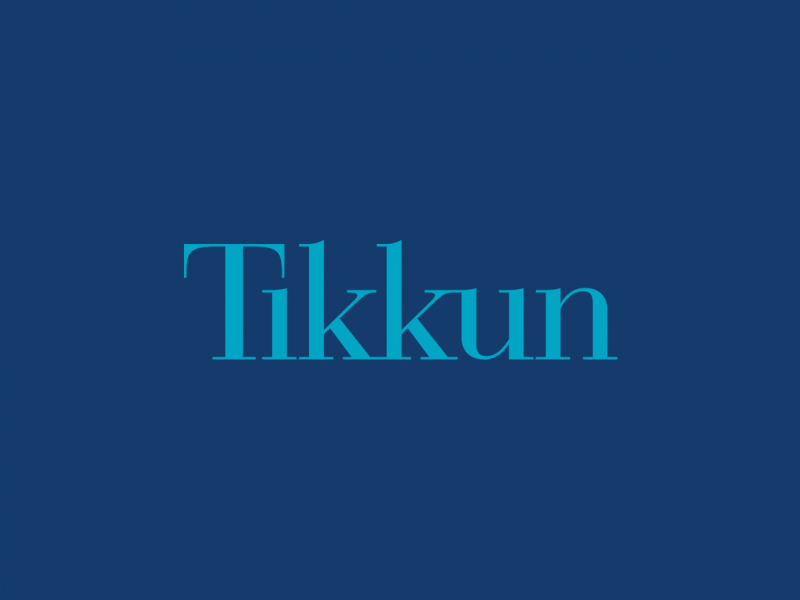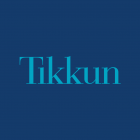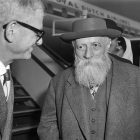The gravestones rose at the top of the hill. They were black or gray, clumped together geometric and precise as if for protection from the outside world. He was mindful of how in the old country, people broke the things of the living and the dead when they vandalized cemeteries.
Editorials & Actions
A variety of perspectives on Elie Wiesel
|
Editor’s Note: Elie Wiesel was an important leader of the section of the Jewish world which believes that the highest, perhaps the only, commandment left to observe after the Holocaust is “don’t forget what happened to us Jews.” He used his growing fame in good ways at times, bringing attention to the suffering of other peoples. His attention to the Holocaust and his ability to educate large numbers of people to the suffering of the Jewish people, was a valuable contribution–and helped make clear to people around the world that the Jewish people should never again be powerless to defend itself against those who choose to make our entire people into their enemies. Yet it is important to realize that there are good ways to protect our people and bad ways–and that was not a distinction Wiesel helped people make. He never asked why Jews should have a Holocaust museum on the national mall in D.C. before there was a museum about US enslavement of African or US genocide of Native Americans.
Articles
Jacobs, the Jew
|
Jacobs knew he was different: after his bar mitzvah he left all that mishigas behind. He looked at himself now simply as an American. He even thought about changing his name, but he knew it would kill his father.
Editorials & Actions
Rabbi Dev Noily and others on the Book of Esther
|
A note from Rabbi Lerner: We have been struggling internally about how to deal with the Jewish violence and revenge that is part of the Purim story. Should we boycott this holiday entirely? Is there a way to challenge its hurtful parts without discrediting the legitimate joy our people feels when it is saved from the intended violence against us? These are some of the issues raised in the articles below. They were dealt with beautifully at the Purim celebration held at Urban Adamah March 23, 2016, in Berkeley, in an intro to the last chapters of the Megillah of Esther where the acts of mass killings by Jews against our supposed enemies is recounted with nary a word of regret or sadness that we have at the Passover seder when we dip from the cup of joy when naming the plagues visited on the Egyptians–a symbolic way of saying that we cannot be fully happy when our own liberation comes at the expense of the suffering of others (in that case, including the death of the first born children of Egypt, few of whom had anything to do with the oppression of Israelite slaves).
Editorials & Actions
Scholarship and Provocation: A Response to Arthur Green’s Review of Hasidism Incarnate
|
Scholarship and Provocation: A Response to Arthur Green’s Review of Hasidism Incarnate
bu Shaul Magid,
I, Arthur Green, recently published a review of my recent book Hasidism Incarnate in Studies in Jewish-Christian Relations. The review raises some important issues in regards to the study of Hasidism and Hasidic literature more generally, and the nature of comparison in the study of religion. It also gestures toward the complex relationship between scholarship and theology that many of us, both in Jewish Studies more generally, and Jewish mysticism in particular, traverse in our work. I begin my discussion of the larger questions raised in the review with Green’s claim of omission. In his review Green notes that it is surprising that I chose not to invoke Psalm 90:1 A prayer to Moses, man of God (ish ha- Elohim) in my study as it would ostensibly support my basic contention about incarnational thinking.
Editorials & Actions
The Burning Bush and Black Fire
|
Editor’s note: This week Jews around the world begin reading the 2nd book of Torah: Shmot or Exodus, by studying Exodus I-1 to VI-1). It is in many ways the most revolutionary book of the ancient world, both in its poltiical and in its spiritual depth and originality. Rabbi Fern Feldman’s commentary opens up for us one aspect of the spiritual depths of Exodus–and we invite you to open yourself to her wisdom. And if you happen to be in the S.F. Bay Area on Jan.2, you are also invited to study the first five chapters of Exodus with me at 951 Cragmont ave, Berkeley, a few doors south of where Cragmont Ave intersects with Marin Ave, starting at 10:30 a.m and followed by a veggie pot-luck lunch, shmoozing and singing and more discussion–please bring a delicious vegetarian dish to share with ten people (or you can come at 9:30 a.m. to davven/pray with me and Cat Zavis–more info at www.beyttikkun.org)–Rabbi Michael Lerner
The Burning Bush and Black Fire
by Rabbi Fern Feldman
Moses had a revolutionary, revelatory experience while he was following his flock of sheep in Midian. The Torah, in Exodus 3:2 tell us:
וירא מלאך יהוה אליו בלבת־אש מתוך הסנה וירא והנה הסנה בער באש והסנה איננו אכל:
“An angel of Adonai appeared to him in a blazing fire out of a bush.
Editorials & Actions
Ba’nu Choshekh L’kadesh: Sanctifying darkness, seeding the light” by Rabbi David Seidenberg
|
Every year at my boy’s school there’s a Chanukah concert that includes rap songs and other talent. A few years ago, it included the song the popular song, “Ba’nu Choshekh L’garesh“. I’m not so connected to modern Israeli culture, though, so it was my first time hearing it. Here’s a translation:
We come, the darkness to expel –
In our hands, light and fire. Each one is a small light,
And all of us together – an immense light!
Editorials & Actions
A Chanukah Prayer of Lights
|
A Chanukah Prayer of Lights
by Rabbi Warren Stone
Source of Creation and Life of the Universe We gather together on Chanukah
As Jews of conscience
with a deep spiritual bond to the lights of freedom. We are grateful for the inner might of the Maccabees Who fought to reclaim a Jerusalem in despair
And rekindle the lights of human freedom. Freedom has many faces:
Freedom from war and conflict or threats of terror
Freedom to have a secure home
Freedom from hunger, poverty and despair. Freedom is deeply personal as well:
Freedom to express one’s gender identity without fear Freedom to express one’s racial identity without fear Freedom to make choices about of life and deepest beliefs Freedom to live our faith in all of its beauty
without negating anyone else’s. Our Chanukah menorah with its eight branches and Kindling light
Remind us of the diversity on our Earth
Bound together with a branch of Oneness.
Politics & Society
“The Ploughshare Without Fear”: Remembering Martin Buber (1878-1965)
|
Carol Ascher on Martin Buber’s legacy and how we can honor and incorporate his vision for Jews and Israelis living “together with”.
2015
Making Amends: Healing from Individual and Collective Trauma and Loss
|
The bloody photos from East Jerusalem triggered memories of violence at home. Resisting state violence can’t be separated from personal healing.
Editorials & Actions
Reading the Beginning of the Torah and a note on Why We do Hakafot (circle dancing with Torah) on Simchat Torah
|
A Kavannah for Reading the Beginning of the Torah
– B’reishit 1:1-2:3 (Genesis chapter 1 sentence 1 to chapter 2, sentence 3)l
by Rabbi Diane Elliot Simkhat Torah 2015 / 5776
On Simkhat Torah we read the very end of the Torah, in which Moses– our faithful shepherd through so much of the Khumash (The Five Books of Moses, a.k.a. Torah)– dies by God’s kiss and is mourned by the people. And then we roll the scroll back to the very beginning, to the Book of Genesis, B’reishit, which might be translated: “in a beginning,” or “with a beginning.” Not “in the beginning,” but “in a beginning”: just one out of the many possible places our story could begin. What kind of beginning will we have this year? What Torah will unfold for you, for each of us, this year? Will it be a Torah of justice or of injustice?
Editorials & Actions
A Spiritual Practice of Forgiveness
|
A Spiritual Practice of Forgiveness
(Inviting people of all faiths as well as secular humanists and secular humanists to adopt this practice and adapt it in ways that you can actually use it in your own life every day. It flows from the Jewish tradition of the High Holy Days, but should be used all year round! And if you happen to be in the SF Bay Area at the time of our High Holy Day celebrations (starting this year Sept. 13), please join us at Beyt Tikkun Synagogue-Without-Walls in Berkeley–info and registration at www.beyttikkun.org/hhd
Every night before going to sleep or every morning before engaging in your various tasks, projects or interactions with others, review your life, recall who you feel has hurt or betrayed you and toward whom you are still holding resentment or anger. Then, find a place to say this out loud:
YOU, my ETERNAL FRIEND, Yud Hey Vav Hey, Shechinah, Adonai (or whatever name you give to the God or the spiritual energy of the universe), THE POWER OF TRANSFORMATION AND HEALING IN THE UNIVERSE, WITNESS now that:
I forgive anyone who hurt or upset me or who offended me
…..by damaging my body, my property, my reputation, hurting my feelings, shaming me, undermining my friendships or hurting my income or scaring me or making me angry or damaging people that I love — whether by accident or purposely — with words, deeds, thoughts, or attitudes.
2015
A Spiritual Practice of Forgiveness and Repentance
|
You don’t have to be Jewish to benefit from the spiritual wisdom of Jewish High Holidays!
2015
The Poetry of a Jewish Humanist
|
Swimming in the Rain: New and Selected Poems 1980-2015
by Chana Bloch
Autumn House Press, 2015
A child of immigrant parents who was raised in an observant Jewish household, poet Chana Bloch has absorbed the details of her ethnic and linguistic heritage; this includes what she has called “the habit of questioning,” which is “not only sanctioned by Jewish tradition, it’s an honored part of it.” As a poet, biblical scholar, and translator of ancient and modern Hebrew poetry, she has followed her teacher Robert Lowell’s advice to “learn to write from [her] own translations.”
Swimming in the Rain: New and Selected Poems demonstrates that Bloch has converted that important lesson into a unique poetic voice that modulates from the homespun to the literary and shifts from wit and humor to a pull-no-punches toughness. Spare and musical, intimate while open to history, intelligent and emotionally rich in the details of divisions and connections, Bloch’s poetry negotiates the complexities of her identity as a first-generation Jew, a woman, a child, a parent, a wife, a lover, and a citizen. A self-proclaimed “Jewish humanist,” Bloch quarrels with tradition by asking why God has to make divisions. Some of the divisions she writes about include those between husband and wife, parents and children, illness and health, historical memory and momentary joy, and the contradictions within Judaism itself. Bloch critiques these divisions and, when she finds them, offers alternatives that are more inclusive and more humanistic.
Editorials & Actions
God’s Prayer: a Review of an amazing book by Michael Kagan
|
Hearing God’s Prayer—Inside and Outside of Religion
a review of God’s Prayer by Michael Kagan, by Ya’qub ibn Yusuf
God’s Prayer is a collection of messages which the author, Michael Kagan, experienced receiving from God. We might call it a book of contemporary prophecy. It begins with a call to all human beings to stop abusing one another as well as the planet which supports us. It proceeds with particular messages for the Jewish, Christian and Islamic communities: each one is seen as having a mission to fulfill which requires our going beyond our current pre-occupation with ourselves. The book goes on to address the significance of Jerusalem and the times in which we live, and the deeper implications of healing ourselves and the earth.


